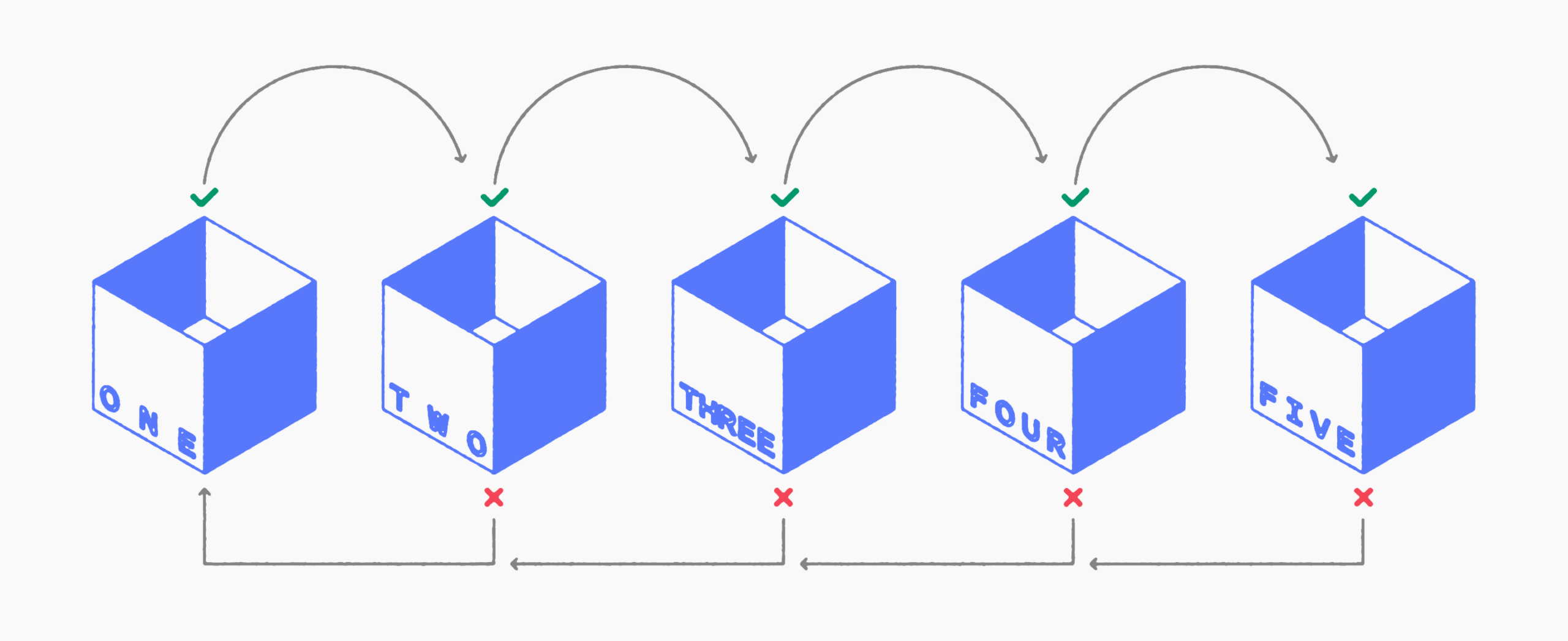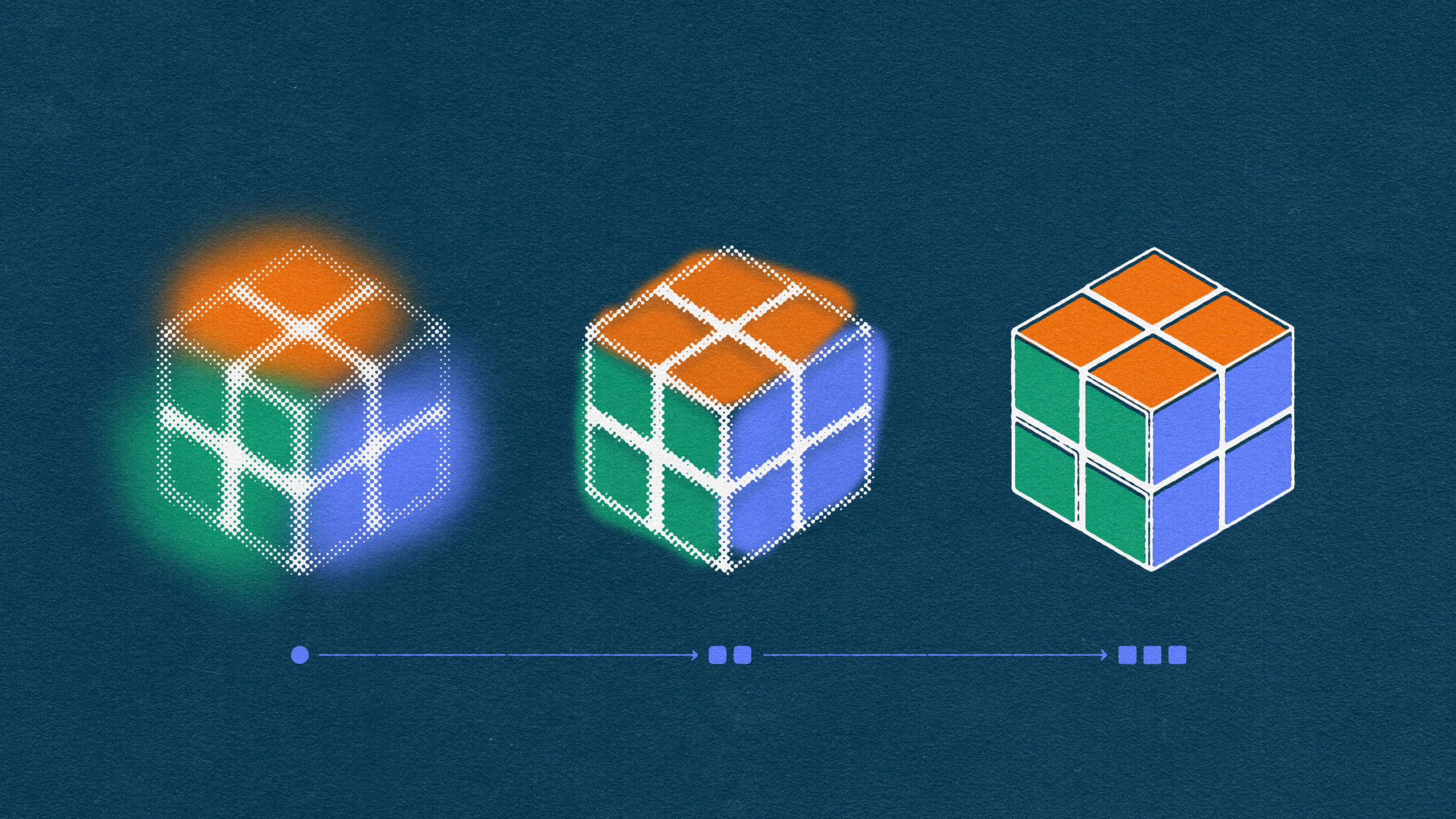“Work smarter, not harder.”
We’ve all heard this aphorism at one point or another, but it hits a bit closer to home if you’re a learning professional.
As someone who’s committed to helping learners expand their knowledge as quickly and as effectively as possible, you understand the necessity of strategic approaches to learning and the negative implications of badly-designed methods.
Spaced repetition, a powerful evidence-based learning strategy, is a tried-and-true way to help your learners “work smarter” without needing to work much harder. If you’re looking for simple, cost-effective, and versatile ways to boost learner retention throughout your organization, you’ll benefit from learning how to use spaced repetition. And if you already know how to use this learning strategy, it might be time to brush up on best practices for incorporating it throughout your current framework.
If you’re wondering how to do spaced repetition and/or incorporate spaced repetition learning into your organization’s approach, read on to discover:
- What is spaced repetition?
- How to use spaced repetition
- 3 examples of spaced repetition in practice
- Work smarter, not harder
Let’s dive in.
What is spaced repetition?
Spaced repetition, also called distributed practice, is a simple process.
It’s a memorization technique that optimizes a learner’s capacity for long-term memory retention. Spaced repetition involves asking learners to practice “active recall,” or actively retrieve pieces of information from their memory, at gradually increasing intervals.
These intervals are determined strategically based on a spaced-repetition system algorithm or schedule. There are a range of different systems to choose from, which we’ll discuss later.
History of spaced repetition
In 1885, German psychologist Hermann Ebbinghaus (1850-1909) published his discovery of the learning and forgetting curves, which he represented via graphs illustrating the relationship between time and memory.
The revelatory graphs showed that as time passes, our memories weaken rapidly if we don’t encounter the information again. This is especially true immediately after learning. If you’ve ever studied a foreign language for years, only to look back and realize you remember nothing, this probably feels intuitive.

Ebbinghaus’ findings emerged from a long-term self-study, aimed at understanding and combating the forgetting process, and made clear that spaced-out instances of repetition at certain periods of time are an incredibly effective way to mitigate forgetting. He called this phenomenon the “spacing effect.”
About a century later, Peter Wozniack developed the first spaced repetition system from Ebbinghaus’ ideas—the infamous SuperMemo system—popularizing spaced repetition as a learning strategy.
The science behind spaced repetition
Spaced repetition is a sort of brain hack. Imagine a hacker altering “source code,” or a learner’s memory, from the back end. They combat the “virus,” or malware containing the effects of time passing on memory, with a strategically-designed systematic algorithm.
By reviewing material at predetermined and gradually increasing optimal intervals, this algorithmic learning strategy leverages the spacing effect—which illustrates that 5 repetitions of information at optimally spaced out intervals is more effective than 10 repetitions in a single day—to increase long-term memorization capacity.
By interrupting forgetting at key points along the forgetting curve’s timeline, the spaced repetition method bolsters neural pathways in the long run and increases storage strength—the degree of depth to which memories are stored. As a result of the increasing time between intervals, learners are also forced to exert more subconscious mental effort in order to actively retrieve the information. This means that the spaced repetition technique also enhances retrieval strength—the degree of ease with which memories can be accessed.
These intermittent interruptions demand active engagement from learners and flatten the forgetting curve, working against the “virus” of time to make for better learning outcomes.
How to use spaced repetition
The benefits of spaced repetition are clear: it not only improves memory retention but also a learner’s capacity to gain and apply truly transferable knowledge. Plus, it approaches learning as a process rather than a destination, unlike traditional rote memorization or cramming methods. Spaced repetition is an especially effective strategy for adult learners.
But how can you actually use spaced repetition to help learners grow, make knowledge actually stick, and achieve lasting results for your team? How might this method help you meet people where they are and create real change?
Let’s look at a few best practices for applying spaced repetition to your learning.
Choose a spaced repetition schedule
First, you’ll need to select an algorithm or schedule that outlines optimal intervals for reviewing information.
Here are a few popular methodologies you can consider while determining which schedule you’ll follow.
Piotr Wozniak’s revolutionary SuperMemo (SM-2) system
This algorithm can be used for learning a wide variety of information, including material presented in visual formats. It’s the most common spaced-repetition system, and it suggests the following intervals:
- 1st repetition: 1 day after initial learning
- 2nd: 7 days after initial learning
- 3rd: 16 days after initial learning
- 4th: 35 days after initial learning
Sebastian Leitner’s bare-bones Leitner system
This manual approach requires five different boxes, which are used to categorize flashcards featuring bits of information. If the learner remembers the information on the flashcard, they move it “up” one box (from box one to box two). If they don’t, they move it “down.”
Although there’s no single right timeline, as the exact intervals for implementing the Leitner system vary according to interpretation, you can refer to this commonly-used schedule:
- Box 1 — Every day
- Box 2 — Every 2 days
- Box 3 — Every 3 days
- Box 4 — Every 9 days
- Box 5 — Every 14 days

Once the learner has successfully recalled the information on a flashcard in Box 5 a few times, the flashcard can be retired. The exact number of successful recalls required for material in the final box to be retired is also debated by learning professionals, so trial and error is key to discovering how many repetitions are right for your team with this framework.
Pimsleur’s effective language-learning method
This algorithmic spaced-repetition method works similarly to the SuperMemo system but was designed for enhancing language-acquisition efforts.
This means it works best for material presented via auditory and oratory formats, as its optimal intervals were determined based on how learners’ brains process this specific type of material. Here’s the schedule it suggests, which should be followed immediately after initial learning:
- 5 seconds
- 25 seconds
- 2 minutes
- 10 minutes
- 1 hour
- 5 hours
- 1 day
- 5 days
- 25 days
- 4 months
- 2 years
According to Pimsleur’s research, immediately reviewing material 5 seconds after it’s introduced, then 25 seconds, then 2 minutes, and so on, helps audial and oral information stick in the brain more effectively from the start.
This is the difference between his and Wozniak’s approach. But similarly to the SuperMemo system, you can see that it then suggests returning to the same material after a longer time period has passed to solidify knowledge. You can use an app, a software system, a manual approach, or a combination of the three to help you and your team stick to these intervals.
Conduct a pre-assessment
Your spaced repetition schedule is set—what’s next? Before you start introducing material to learners, evaluate their pre-learning knowledge levels with a pre-assessment. You can implement this via any format you see fit—qualitative written evaluations, multiple-choice assessments, or online quizzes.
Whatever method you choose, it’s essential to establish a baseline that you can later use to determine the effectiveness of your learning initiative. This also helps you meet learners where they are, which is a central facet of effective learning! Make sure to focus on the most important material and the metrics you’re trying to improve upon.
How to conduct a Learning Environment Analysis
In this guide, you’ll find an in-depth overview of a Learning Environment Analysis, a powerful framework for accurately understanding adult learners’ previous knowledge, current challenges, and needs so that you can design the right learning solution. Plus, get worksheets and templates for each stage of the process.
Download the guide→Review information at optimized intervals
Following your chosen spaced-repetition schedule, ask learners to actively recall pieces of information at those predetermined intervals. Review previously-introduced material while mixing in new material simultaneously—this simple trick will increase the rates of transferable-knowledge acquisition.
Be creative with the methods you use to introduce and review material. Make sure to include activities aimed at a range of learning preferences, because all learners are unique. Integrate lots of microlearning approaches, and you can utilize a mix of synchronous and asynchronous learning techniques.
It’s critical to remember that learning is a process, not a one-time solution. It’s okay if learners forget the material, especially because you now have a plan to boost long-term retention! That’s simply a part of the journey.
Conduct a post-assessment
Once you’ve completed the spaced-repetition schedule, conduct a post-assessment to evaluate its success. This allows you to determine how much your efforts have impacted knowledge retention rates and gives you all the information you need to improve upon your future initiatives.
Spaced repetition in practice: 3 examples
To illustrate when and how you might use it, let’s look at three practical examples of spaced repetition.
Gamified activities and assessments
Weave intermittent practice activities, quizzes, and knowledge checks to test retention throughout each stage of your learning experience. Games like “Spot the Error,” “Jeopardy,” and “Bingo” can be customized to meet your organization’s needs and allow you to get an idea of what your team members know while solidifying their knowledge.
Scenario-based interactions and integrated practice activities
Once the learning experience is complete, spaced repetition can be continuously integrated into long-term employee development efforts. Think learning initiatives focused on practical knowledge, throughout which you can leverage role-plays, games, and innovative practice activities that reinforce material at scheduled checkpoints while keeping your learners engaged. You can also leverage “learning in the flow of work” to incorporate spaced-repetition-inspired learning less formally, by weaving these activities throughout daily workflows.
Facilitator-led, learner-centered check-ins
Conducting one-on-one meetings between leadership and team members at optimized intervals is a great way to incorporate spaced repetition. During these check-ins, utilize diverse, creative, and learner-focused ways of reviewing the material.
Some leaders choose to review general workflow processes, policies, and practices, while others prioritize reintroducing more specific information. Either approach works. It just depends on what your priorities are, and which areas you’re looking to improve upon. You might conduct an open-forum discussion about organizational values and goals, ask the learner to explain a technical concept in their own words, or have them prepare a short presentation on what they learned.
Work smarter, not harder
You weren’t the only high-school student wondering how to remember what you study with less effort. And you aren’t the only L&D professional aspiring to help your learners do the same.
Incorporating spaced repetition into your learning framework is an effective and proven way to help your learners work smarter, not harder, while helping you foster learning that creates real change—as all learning should.
Looking for more strategies to help cultivate better learning processes?
Peruse pages of innovative, interesting, and illuminating ideas about learning strategies here.
Get inspired→